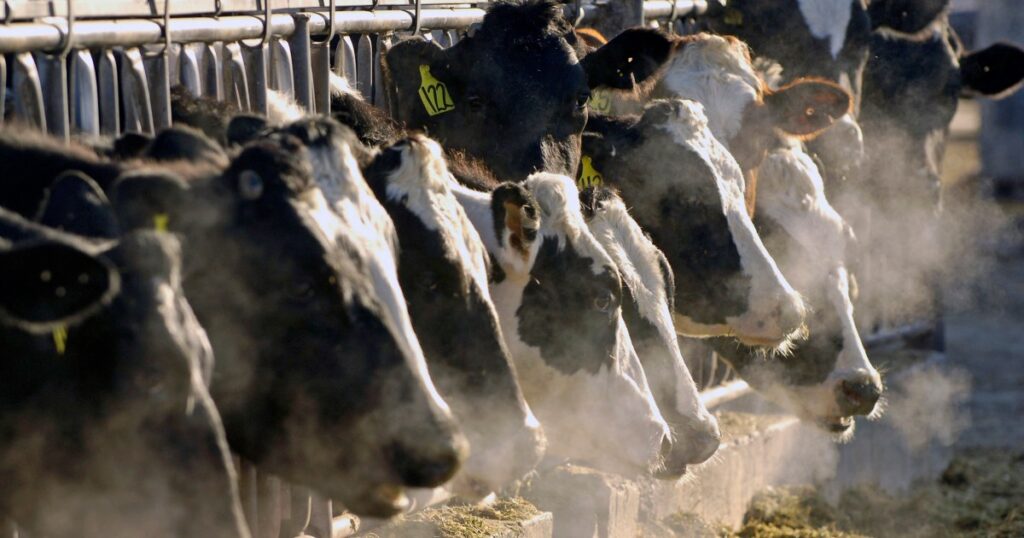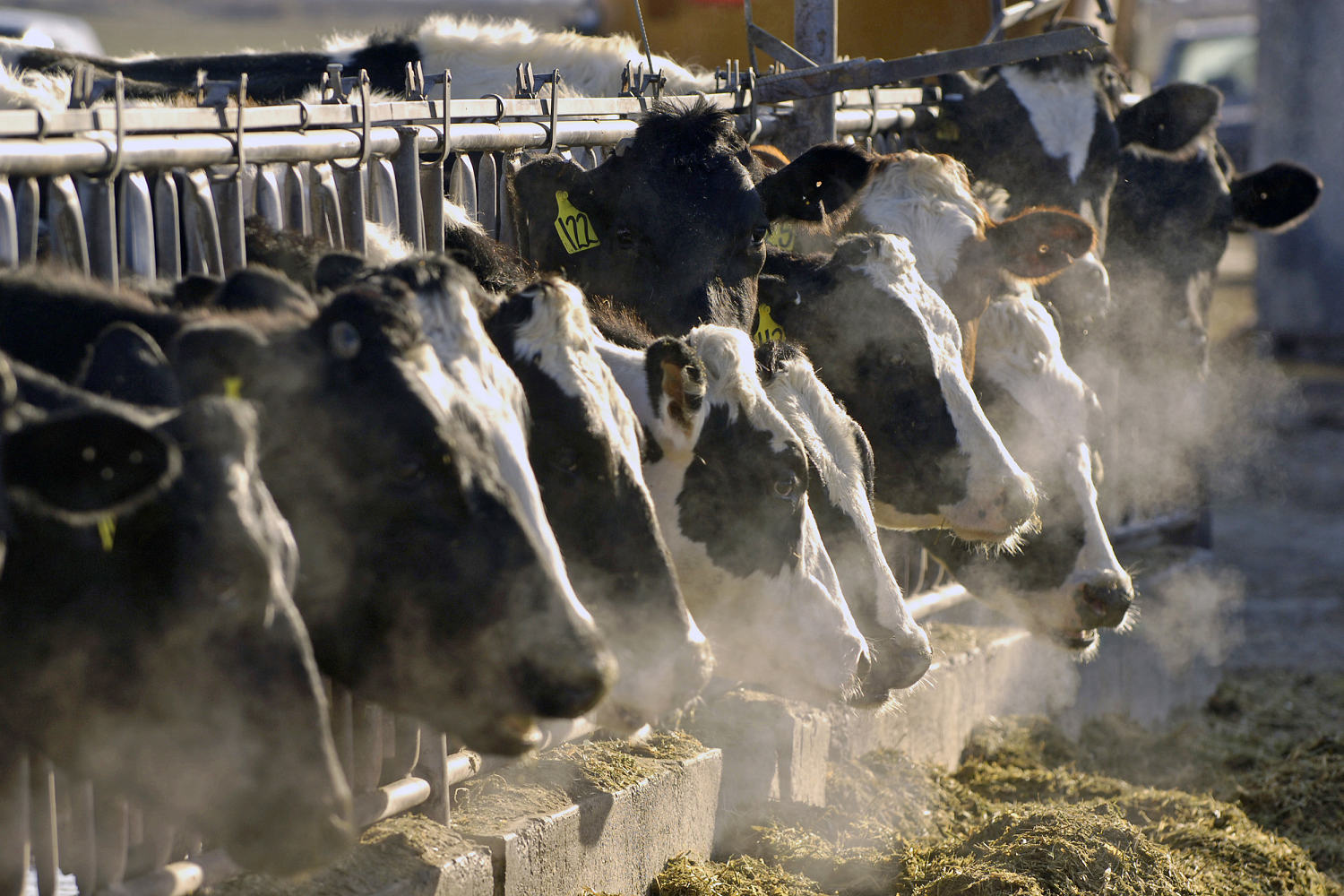

A strain of bird flu spreading among dairy cows in Nevada has infected a dairy worker in the state, the Centers for Disease Control and Prevention said Monday.
The patient, who’d been working with sick cows, was found to have a strain of bird flu called D1.1, which has long been circulating in wild birds. It’s different from the strain of the virus that’s caused the majority of human infections in the U.S., called B3.13.
D1.1 has a mutation that could make the virus spread more easily in mammals.
It was found in dairy cows for the first time last month — also in Nevada — through the National Milk Testing Strategy that monitors for bird flu in dairy cows by testing their milk.
It marks the second time a strain of the bird flu virus has “spilled over” from birds to cows.
“That’s a big deal,” said Michael Osterholm, an infectious disease expert and director of the Center for Infectious Disease Research and Policy at the University of Minnesota. It’s another indication that the virus continues to change.
It’s unclear how long D1.1 has been circulating in dairy cows or what its implications are, Andrea Garcia, vice president of science, medicine and public health at the American Medical Association, said in a YouTube video posted by the group Monday.
“Some experts do fear that it could mark a new chapter in the outbreak or that bird flu may become endemic in the U.S.,” Garcia said. “This is something we are continuing to very closely follow.”
The virus has generally not been deadly in dairy cows, according to the American Veterinary Medical Association. The California Department of Food and Agriculture said that 236 of 738 infected herds in that state have recovered. (Nationally, there have been a total of 962 cases in cattle, according to the Agriculture Department.)
But the virus has wreaked havoc on poultry farms. Millions of chickens have been culled, contributing to skyrocketing prices and shortages of eggs.
The dairy worker in Nevada’s only symptom was pinkeye and the individual has recovered, the CDC said. None of the person’s close contacts have become ill, the Central Nevada Health District said.
Like the Nevada patient, nearly all people infected with bird flu over the past year have had mild symptoms, no matter which type they had.
One person in Louisiana who had the D1.1 strain died last month. The individual, who was over 65 and had underlying health problems, got sick in December after coming into contact with a backyard flock and wild birds.
The CDC estimates that D1.1 was responsible for 15 of the 68 human cases of bird flu found last year. In addition to Louisiana, D1.1 cases have been found in Iowa, Oregon, Washington and Wisconsin.
Last month, the CDC said the U.S. should step up testing for bird flu in hospitalized patients, ideally within 24 hours of admission.
Nearly all human cases of bird flu, however, have been mild. The Nevada patient was not hospitalized.
The CDC maintains that bird flu risk to the general public is low and that there’s no evidence that the virus is spreading from person to person.
But now’s the time for scientists and public health officials to prepare for that to change, said Osterholm, the infectious disease expert.
“We’re gonna have another influenza pandemic, and when it happens, we shouldn’t be surprised,” he said. “But will it be H5, or not? I don’t know.”
 Latest World Breaking News Online News Portal
Latest World Breaking News Online News Portal






